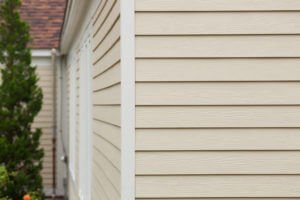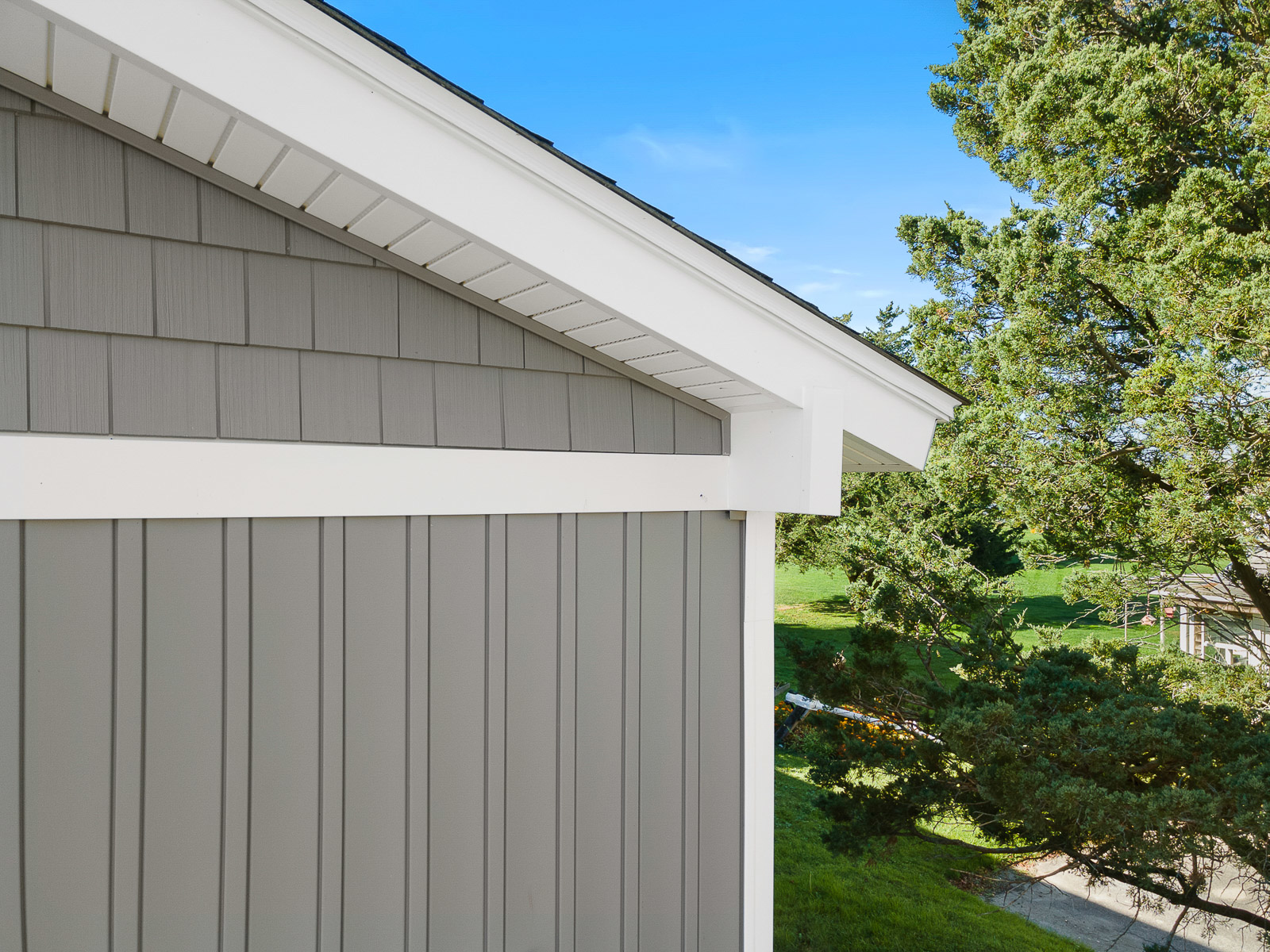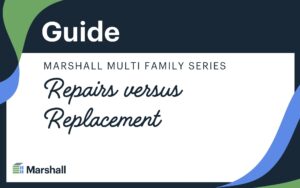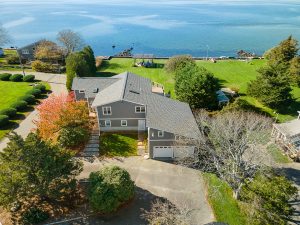
Siding for New England: What to Know and What to Ask

Photo: The combination of composite product styles alongside detailed trim work elevate the look of this Tiverton home.
When it comes to siding, the great return on investment (up to 85% ROI) isn’t the only benefit. Understanding the difference between available options and how each will hold up against our local climate and common pests will save you time and money down the road. For example, selecting a material that most effectively insulates your home will lower your monthly costs. Understanding UV resistance will help protect your long-term investment. While closely evaluating your contractor’s portfolio, ratings, and reviews is always good practice as you approach the install.
Here is a breakdown of each siding material to help you find the best product for your home.
Fiber Cement is a composite made of limestone, iron, clay, cellulose fibers, fly ash, and water. This 100-year-old combination is an incredibly strong product that can hold up against New England’s toughest weather. It’s a great low-maintenance, eco-friendly option that most closely resembles wood (without as much of the hassle). There are many style and color choices, including “better-than-wood” trim options from leading manufacturer James Hardie. It can, however, be the more costly option. And, while it requires less consideration than wood, it does require more maintenance than the options below. As with all installations, the overall aesthetic is reflective of the installer’s technique. Make sure whoever you choose has worked with the product before and understands how to get you the trim look you want. It’s also a good idea to ask your provider about color retention, UV resistance, future painting needs, and the possibility of moisture damage. Discuss the insulation options and make sure they are included in your proposal.
Composite Siding is traditionally made of scraps of pine or cedar combined with a resin to bind, but this formula can be susceptible to rot and termites. More modern composites are made with polymer resins, and granular stone to avoid these issues. Everlast, a New York based manufacturer, offers a realistic woodgrain texture made from impressions cast out of real cedar and a board and batten option (which is trending in 2023 alongside vertical panels). Tando’s Beach House Shake has become a coastal favorite for its realistic look and durability. Composite tends to offer the best moisture reduction and ventilation systems. Be sure to ask your installer about painting options as some composite can be painted while others cannot. As with the fiber cement, ask about wind ratings, color fading, and UV resistance and compare your results if they’re running head-to-head.
Vinyl is the most cost-effective siding option. It is virtually maintenance free. Experienced installation and custom trim work are keys to getting the best ROI. Industry insiders will tell you it’s the trim work that distinguishes a good job from a great one. Most of the cons associated with vinyl aren’t factors when you work with a contractor who understands your home’s climate, the material itself, and the installation process. The wrong contractor, however, can actually lower your ROI. Color fading can also negatively impact your home over time, so be sure to ask about this during your consult. Replacement panels are commonly weighed against the cost of repainting existing wood. So, if this is a consideration, be sure to ask about your installers replacement process should you need anything in the future.
The good news is that with any of these products (*when they are insulated) it’s estimated homeowners save upward of 20 percent on annual energy bills (and they reduce their carbon footprint by decreasing the amount of energy used in the home). In New England, insulation is particularly useful in maintaining a home’s ideal temperature by reducing heat loss in winter and heat gain in summer. (If you live on a busy street, it can also help with noise reduction.)
Keep in mind, other products on your home factor into efficiency and savings. An insulated siding job can’t help if the windows are drafty, or the roof isn’t properly ventilated. Hiring a contractor that understands how all of these exterior systems work together is the best option – whether you’re considering a complete overhaul or planning to work on one aspect of your home’s exterior.
We know it’s a lot to take in and we’re always here to offer advice. Our consultations are always on the house, and we can even provide a 3D rendering of your home so you can test the look of different product and color combinations. We take no money down, have flexible payment options, and thousands of five-star reviews. When you’re ready, get in touch. We’d be happy to help.
For more on our process head on over to our YouTube page. Or get in touch below.
Contact Us Page Form
"*" indicates required fields
Get helpful tips in your inbox
Our goal is simply to help you navigate the world of home repairs.



